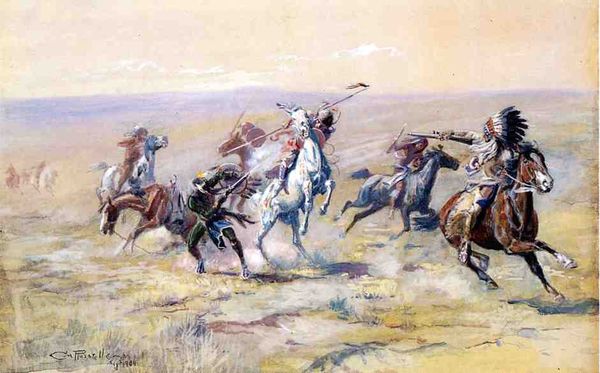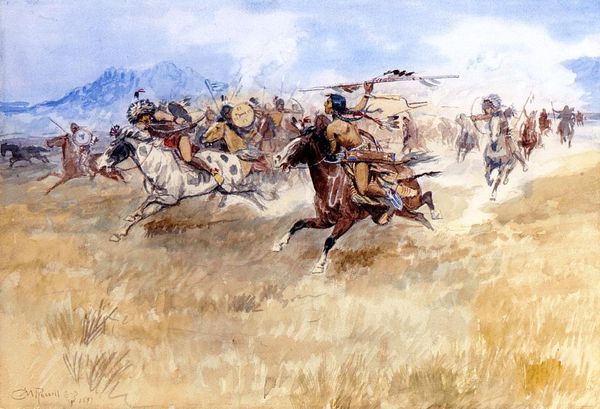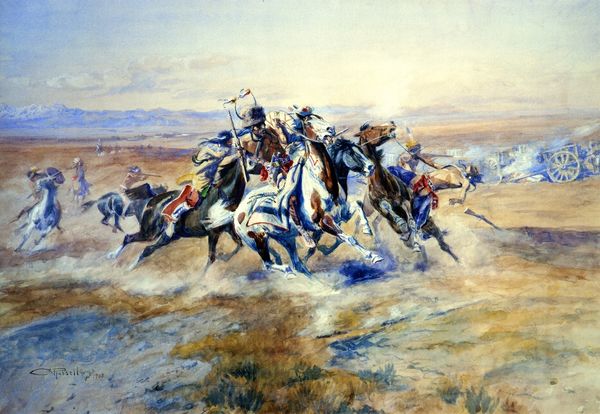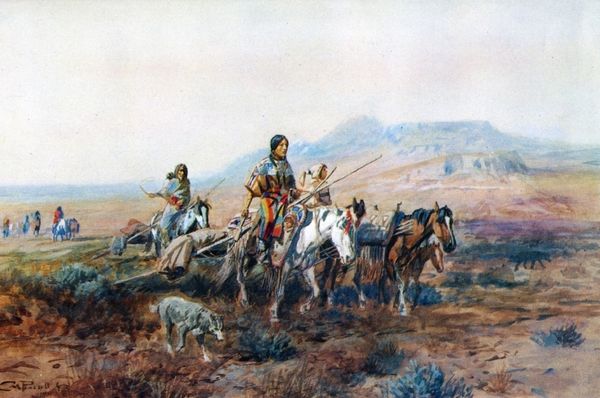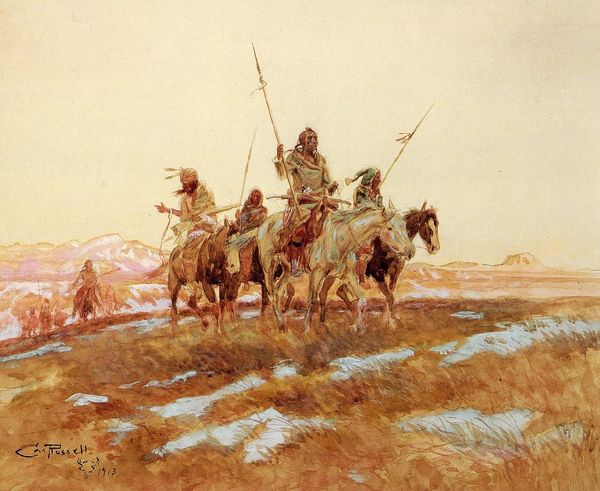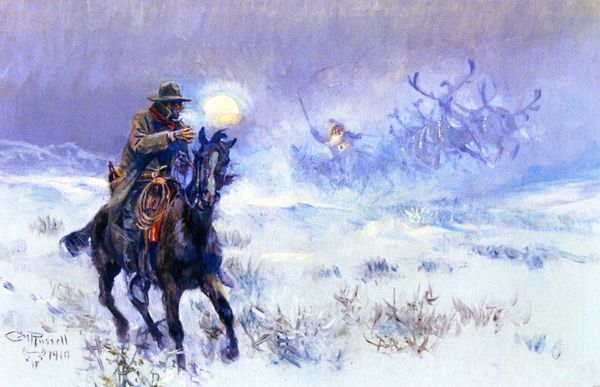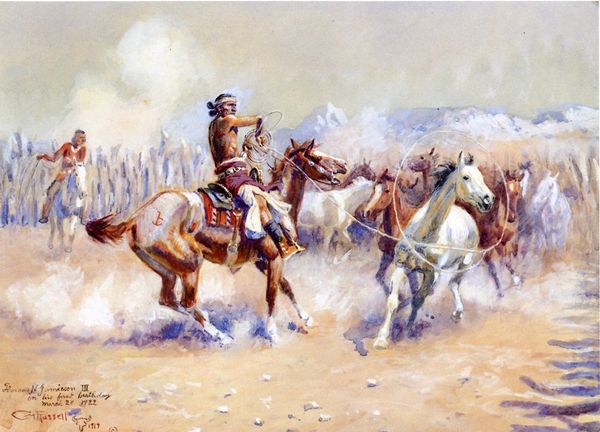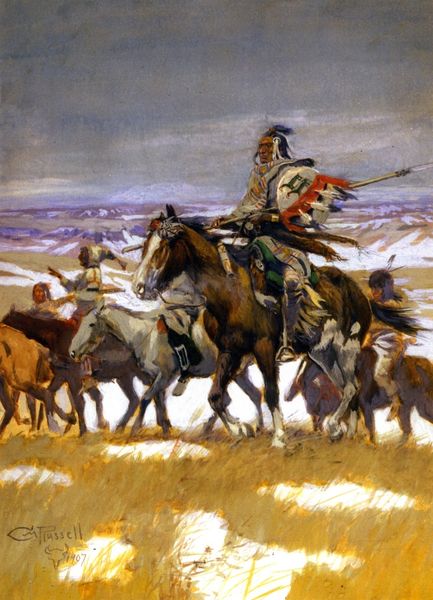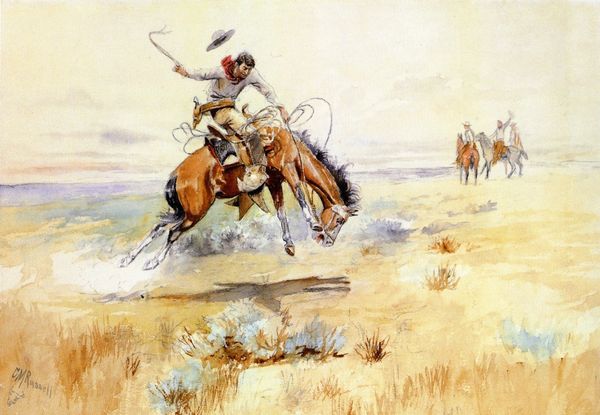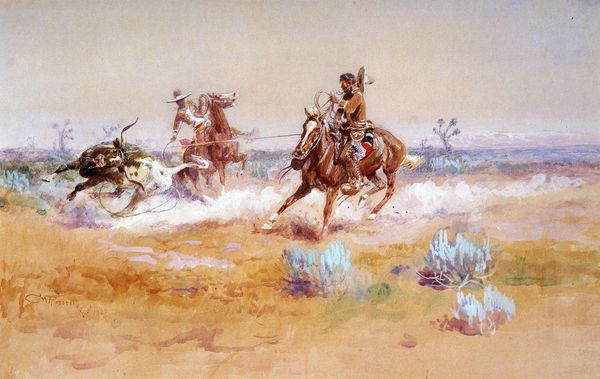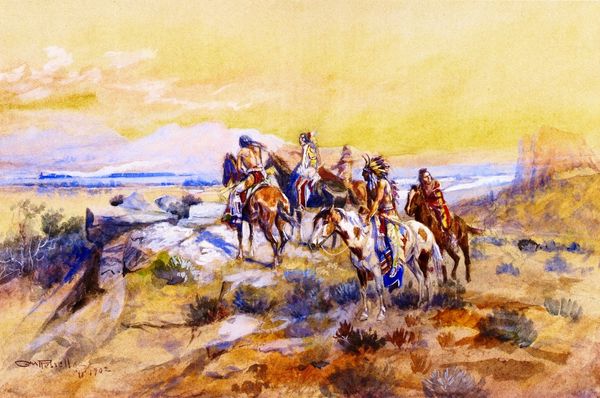
painting, plein-air
#
narrative-art
#
painting
#
plein-air
#
landscape
#
indigenism
#
figuration
#
oil painting
#
watercolor
#
realism
Copyright: Public domain
Editor: So, here we have Charles M. Russell’s "Crees Coming in to Trade" from 1896. It looks like an oil painting, though someone mentioned it could also be watercolor. There's something melancholic about this depiction of a group of riders making their way across the snow-covered plains. What do you see in this piece? Curator: Beyond the surface depiction, I see a narrative deeply entangled with the complexities of cultural exchange and the impact of colonial expansion. This work captures a moment rife with historical tension. The Cree are presented navigating a landscape – both physical and sociopolitical – altered by settler colonialism. What does their "trade" really signify in the context of asymmetrical power dynamics? Editor: That’s a really interesting point. I was focusing on the journey, but you’re right, it seems more layered when thinking about power. Do you think Russell was trying to comment on that? Curator: Perhaps not explicitly. Russell's work is often interpreted as romanticizing the West, but even within that romanticism, we can dissect the nuances of intercultural encounters. The figures' attire, their laden horses – these speak to the economic and social structures imposed upon Indigenous communities. How do you interpret their expressions? Editor: Hmm, it's hard to tell, but there's a sense of stoicism, maybe resignation. I hadn’t considered how their journey into a trading post, in this environment, probably speaks volumes about displacement and survival under pressure. Curator: Precisely. The landscape itself isn't just a backdrop, but a testament to the harsh realities they faced. Consider how representations of Indigenous peoples were often used to justify colonial agendas, and how Russell's work both perpetuates and potentially subverts these tropes. It is in our deconstruction of such historical images that we confront uncomfortable truths. Editor: I never thought about it that deeply. It definitely changes my perspective. It seems I’ve only just scratched the surface here. Thanks for opening my eyes. Curator: My pleasure. It's by critically engaging with these narratives that we begin to understand the full complexity of art’s relationship to history and power.
Comments
No comments
Be the first to comment and join the conversation on the ultimate creative platform.
